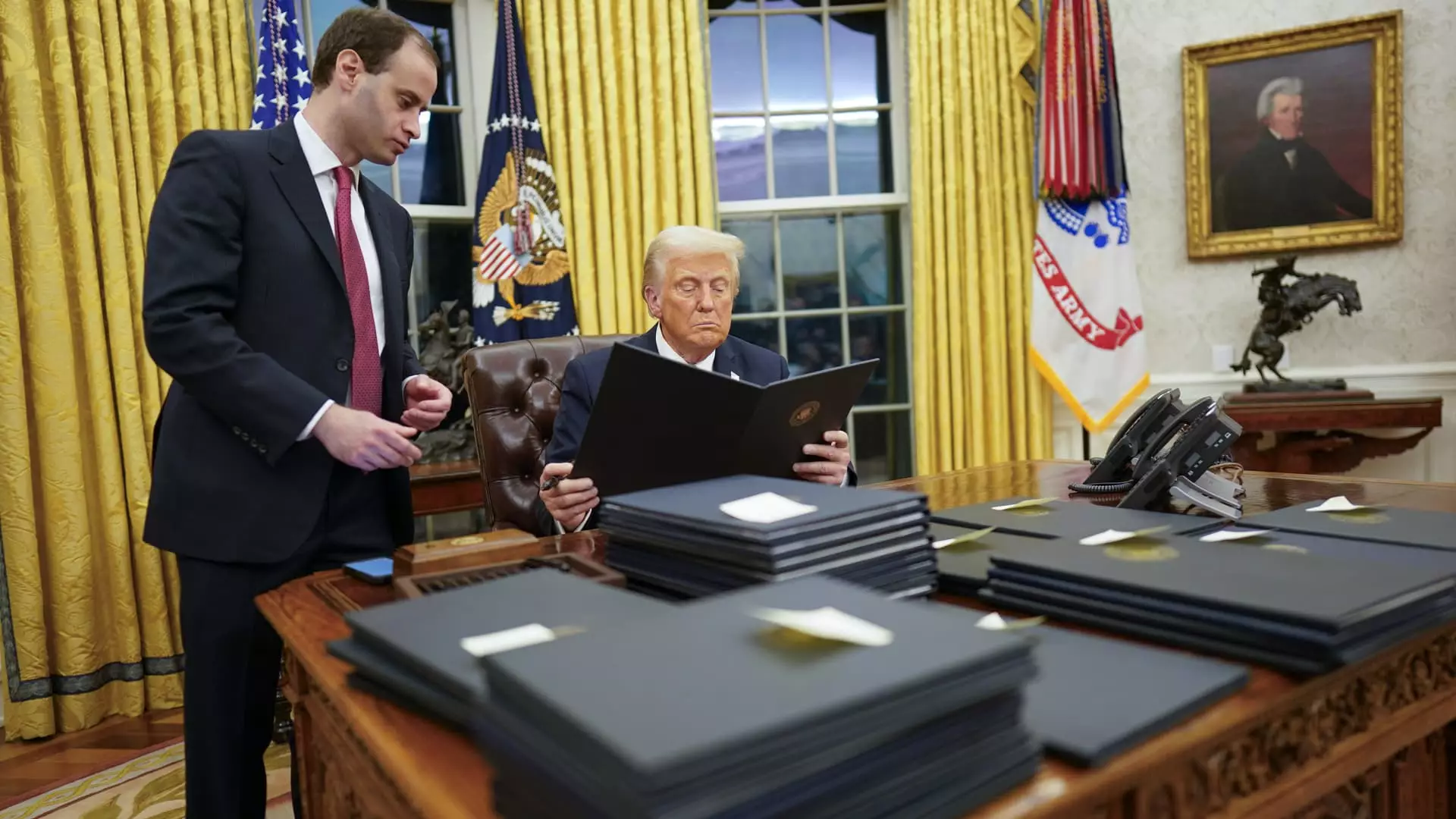The arrival of President Donald Trump in the White House marked a transformative moment in U.S. energy policy, signaling a stark deviation from the strategies of his predecessor. In the early hours of his presidency, Trump initiated a substantial initiative aimed at invigorating fossil fuel production while simultaneously dismantling efforts to combat climate change. This article meticulously examines the implications of Trump’s energy policies and their potential impact on both the industry and the environment.
President Trump wasted no time in asserting his influence over the energy sector, utilizing executive orders to launch a full-scale offensive favoring traditional energy sources. By declaring a national energy emergency, Trump claimed that the U.S. is at risk due to “inadequate and intermittent energy supply” and an unreliable electrical grid, issues he depicted as threats to national security. He underscored his administration’s commitment to bolstering fossil fuels by arguing that burgeoning demands from new technology sectors, such as data centers driven by AI, necessitate an immediate response to expand energy production capabilities.
This declaration sets the stage for broader implications within the energy landscape. Even as Trump’s rhetoric pushed for increased fossil fuel production, industry leaders, including those from major oil companies like ExxonMobil and Chevron, remained measured. They indicated that production levels are primarily dictated by market conditions, suggesting that Trump’s fervent push for energy expansion may not yield immediate changes in operational practices. This introduces an interesting tension between political aspirations and market realities, as the administration’s ambitions may not align seamlessly with corporate strategies.
Among the most controversial moves was Trump’s decision to withdraw the U.S. from the Paris Climate Agreement. This global accord, aimed at limiting global warming, had been a centerpiece of the prior administration’s environmental strategy. Trump’s expedited process for withdrawal—effective immediately upon notification to the U.N. Secretary-General—highlighted a formidable retreat from international cooperation on climate change.
In conjunction with exiting the Paris Agreement, Trump’s administration aimed to roll back significant environmental regulations, including ambitious emissions goals set forth by the Biden administration. The aspiration to transition towards a cleaner energy economy, with a target of 50% electric vehicle sales, was swiftly dismantled, indicating a broader rejection of progressive environmental initiatives in favor of fossil fuel reliance.
Trump’s directives prioritized a massive expansion of energy infrastructure, with federal agencies instructed to expedite the production, transportation, and refining of domestic energy sources. This effort coincided with a push to maximize resource extraction in Alaska, including liquefied natural gas (LNG) projects. Although the administration positioned this as a means to solidify America’s energy dominance, the long-term sustainability of such projects is debatable, especially against the backdrop of global climate imperatives.
Moreover, the scrapping of restrictions on oil and gas drilling in coastal waters posed questions about the legality and feasibility of such reversals. For example, previous legal challenges to similar initiatives signified potential hurdles that Trump’s administration might face in executing its energy agenda.
In a notable shift, Trump also targeted funding mechanisms established during the Biden administration to support clean energy technologies. By pausing the disbursement of funds outlined in the Inflation Reduction Act, including support for electric vehicle charging infrastructure, the administration signaled a clear disinterest in pursuing sustainable energy developments. The directive to halt subsidies for electric vehicle programs further underscored Trump’s priorities, as the push for renewable energy solutions was sidelined in favor of traditional fossil fuel interests.
In another blow to clean energy, Trump issued an executive order suspending new leases for offshore and onshore wind projects. This action not only stymied potential growth in renewable energy sectors but also reflected a broader ideological stance against alternatives to fossil fuels.
President Trump’s actions during his initial days in office revealed a profound commitment to amplifying fossil fuel production while systematically reversing climate change initiatives entrenched during the Biden era. Such a pivot raises critical questions about the U.S.’s role in global climate dynamics and opens a contentious dialogue regarding the balance between energy independence and environmental responsibility. As the nation navigates this complex energy landscape, the ongoing debate between fossil fuel development and the transition to sustainable energy resources will undoubtedly continue to shape U.S. policy in the years to come.

